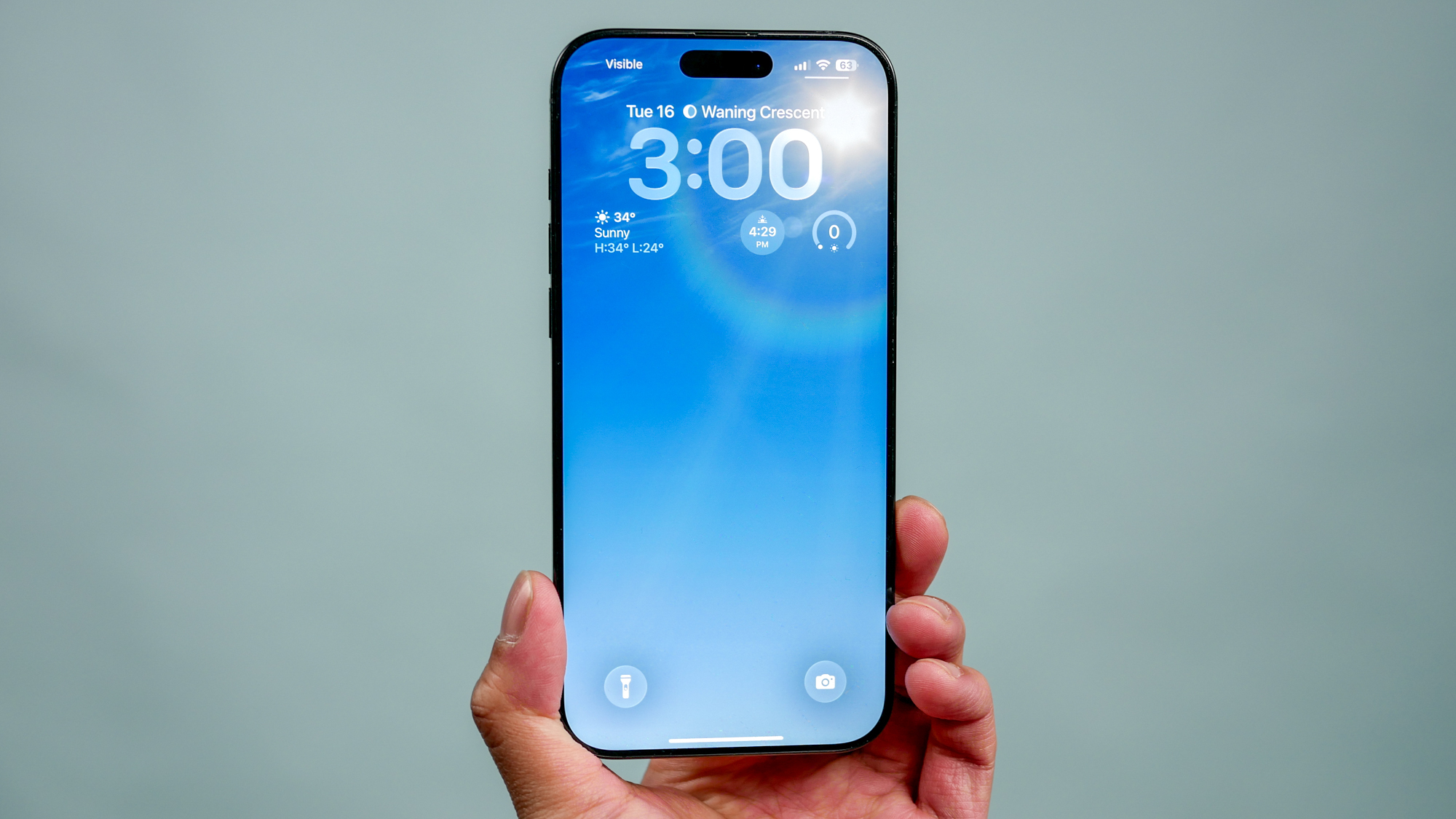Nokia 9 PureView Review: A 5-Camera Flagship Contender
The $699 Nokia 9 PureView, HMD's first flagship Nokia phone in the U.S., has a promising five-camera system and a gorgeous 5.99-inch display.
HMD Global is getting serious about the Nokia brand it now manages. After rolling out a series of budget and midrange Nokia phones, the company now offers a flagship device, the Nokia 9 PureView. There's a lot to like about this phone beyond its unique camera system. The Nokia 9 has a sleek, notch-free design and its gorgeous 5.99-inch, QHD+ display is among the most colorful we've tested.

But it's hard to overlook the phone's many shortcomings, such as poor battery life and finicky fingerprint reader. And, while the five-lens setup is capable of producing outstanding photos, processing times are sluggish and image quality is inconsistent.
Still, the $699 Nokia 9 gets you a lot of phone for your money and has some appeal for professional photographers who want more control over shots taken with their smartphone.
Price and Availability
The Nokia 9 comes in a single model, with a 5.99-inch, QHD+ display, a Qualcomm Snapdragon 845 CPU, 6GB of RAM and 128GB of storage. Blue Midnight is the only color option at launch.
The phone went on sale in the United States and the United Kingdom in March for $699 and £549, respectively. Don't hesitate to place your order, because HMD is calling the Nokia 9 PureView a limited-release phone.
Consumers can buy the Nokia 9 unlocked at most online retailers, including Amazon, B&H Photo Video and Best Buy. The Nokia 9 works with GSM networks like those operated by AT&T and T-Mobile; customers at Verizon and Sprint, which both use CDMA networks, are out of luck.
Nokia 9 PureView Specs
| Price | $699 |
| Display (Resolution) | 5.99-inch, QHD+ POLED (2880 x 1440) |
| Rear Camera(s) | Five 12 MP (f/1.8): 3 Monochrome, 2 RGB |
| Front Camera(s) | 20 MP (f/2.0) |
| CPU | Qualcomm Snapdragon 845 |
| RAM | 16GB |
| Storage | 128GB |
| microSD | None |
| Battery | 3,320 mAh |
| Battery Life (Hrs:Mins) | 8:45 |
| Colors | Midnight Blue |
| Size | 6.1 x 3 x 0.3 inches |
| Weight | 6.1 ounces |
Design: A five-eyed jewel
The Nokia 9 has an attractive if conventional design. There is no notch or hole punch interrupting the 5.99-inch display, nor are there any curved edges. Yes, there are bezels surrounding the display, but they're relatively thin, and the phone still looks sleek and modern.
Get instant access to breaking news, the hottest reviews, great deals and helpful tips.
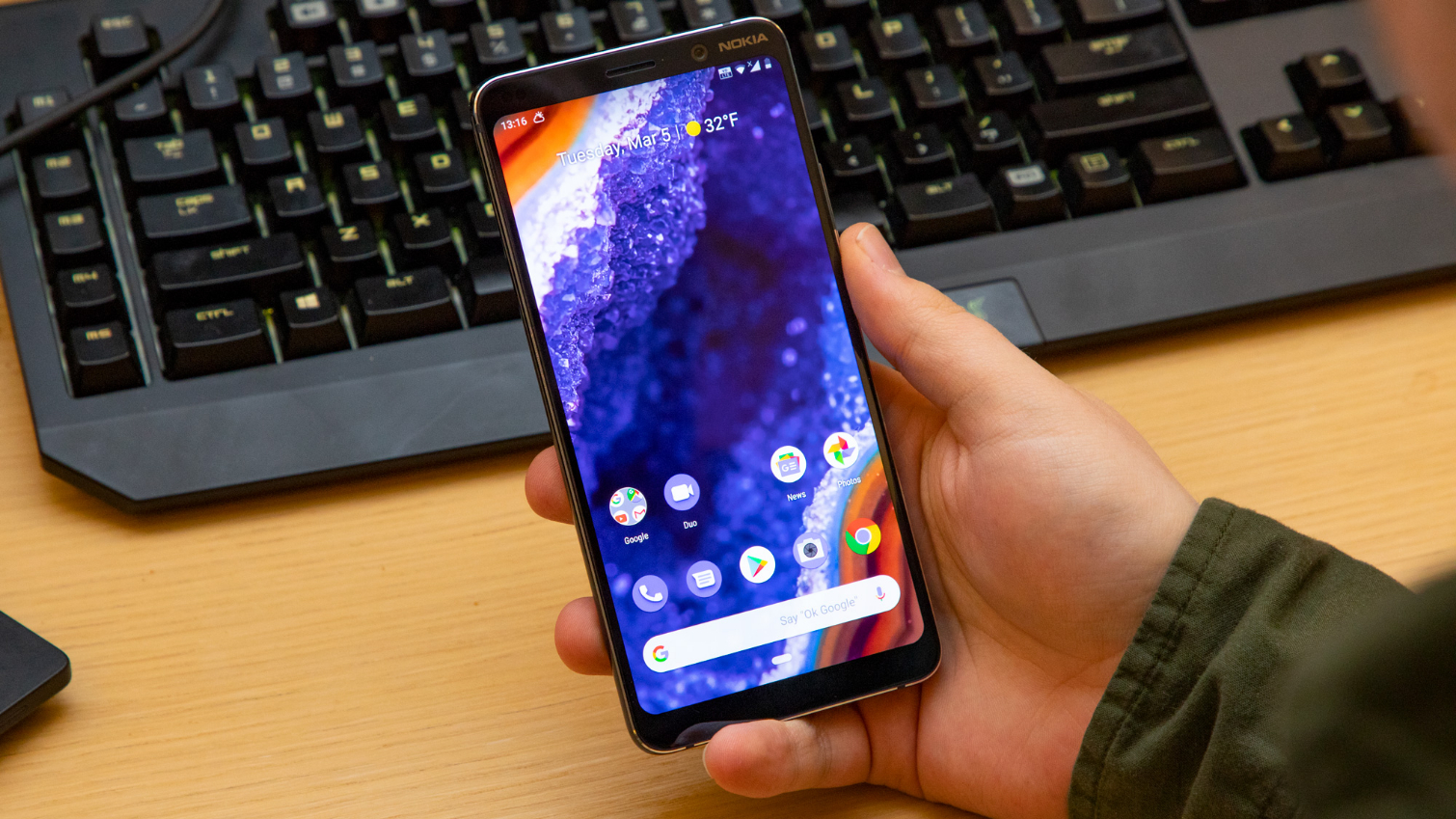
While I appreciate the direction HMD took with the Nokia's look, I do wish it had used the extra real estate on the top and bottom of the display for front-facing speakers, instead of placing them on the bottom. And, the now near-extinct headphone jack is also absent from this phone.
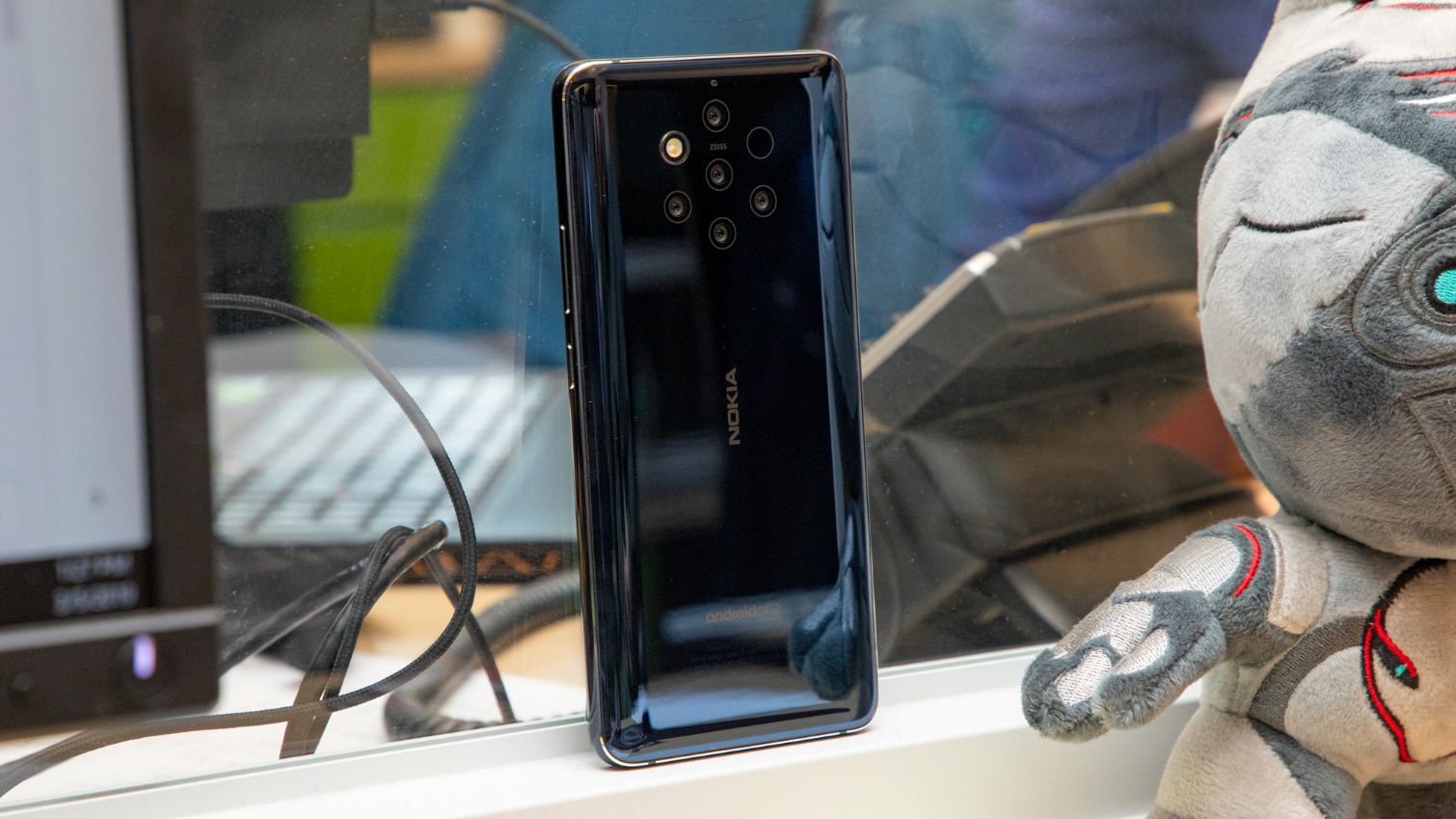
The Nokia 9 may look ordinary by today's standards, but it certainly isn't boring. The phone's gorgeous Midnight Blue paint job is beautifully outlined in chrome trim and flanked by silver-lined volume and power buttons.
Turn the device around and your eyes will immediately be drawn to the five lenses staring back at you. Positioned in an asterisk shape, the bizarre grouping of lenses is unlike anything I've seen on a phone before. Everyone in our office who got a glimpse of the Nokia 9 had a different opinion about the camera module — reactions ranged from intrigued to horrified, though most leaned toward the latter.

Personally, my arachnophobia kicks in every time I gaze at the spider-like pattern of Zeiss lenses, which makes it hard to appreciate the luxurious ocean-blue glass surrounding the camera array or the subtly curved edges that conform to your grip.
If you're not smitten by the Nokia 9's blue finish, then I'm afraid you're out of luck. Midnight Blue is the only color available at launch, making it one of the few phones you can't buy in black, white or some shade of gold.

While flagship phones routinely offer 6-inch-plus displays these days, the 5.99-inch screen on the Nokia 9 still leans toward the larger end of the scale. I had to stretch my fingers to swipe notifications down from the top of the display. That said, the Nokia 9 doesn't feel as cumbersome as the OnePlus 6T or the larger iPhone and Galaxy models.
MORE: Best Phablet: Top Big Screen Phones (6 Inches or Larger)
The Nokia 9 may not be as indestructible as its legendary forbearers, but its 6000-series aluminum frame and the Gorilla Glass 5 covering the display should guard the phone against bumps and scrapes.
Security: Slow and inconsistent
The Nokia 9 PureView has an optical fingerprint sensor embedded in the display for secure login. The OnePlus 6T also uses this authentication method, but its effectiveness varies from one device to the next. In the case of the Nokia 9 PureView, it's more miss than hit.

There was a brief hesitation from the moment my finger landed on the sensor to when the phone unlocked. Compared with the OnePlus 6T's sensor, which instantaneously brought me to the home screen, the Nokia 9's scanner felt sluggish. That fraction of a second may not sound like a big deal, but it adds up if you check your phone dozens of times a day. And, like most optical sensors, the Nokia 9's pales in speed and convenience compared with the new generation of ultrasonic sensors found in phones like the Samsung Galaxy S10.
Making things more frustrating, the area in which you can place your finger is small, and you'll receive a Not Recognized message unless you press directly in the center. Despite these annoyances, the fingerprint sensor remains the best way to unlock the Nokia 9, as long as you don't mind entering a passcode every now and then.
MORE: Best Android Antivirus - Top Free and Paid Mobile Security
HMD also added a facial-recognition feature (think Face ID) to the Nokia 9 in an early software update, but it's just as clumsy. The camera failed to recognize my face almost every time I tried using it after having just locked the phone. Other times, it didn't even try searching for my face. On a positive note, when it did work, TrulySecure was quicker than the fingerprint sensor.
Display: Jaw-dropping colors
There's a lot of hype surrounding those five cameras on the rear of the Nokia 9, but the phone's 5.99-inch QHD+ (2880 x 1440-pixel) POLED display might just be its standout feature.
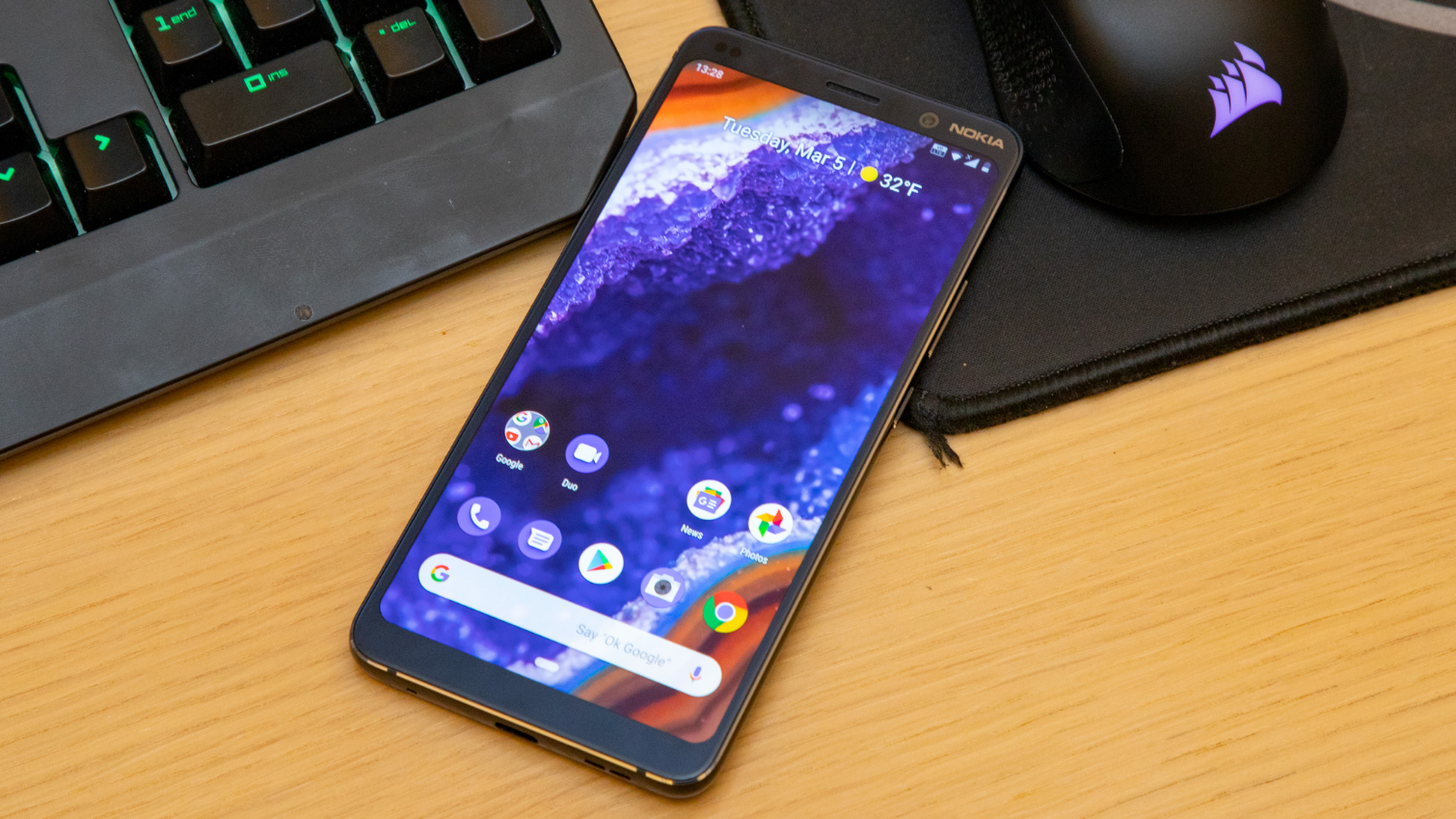
The Nokia 9's panel is fairly luminous, reaching a peak brightness of 430 nits. While that doesn't top the blinding display on the Apple iPhone XS Max's screen, it's brighter than the displays on the Google Pixel 3 (362 nits) and the OnePlus 6T (405 nits).
Covering 252.3 percent of the sRGB color gamut, the Nokia 9's display is more colorful than those on the OnePlus 6T (223 percent), Pixel 3 (202 percent) and Galaxy S10 Plus (136.5 percent). With a Delta-E score of 0.45, color accuracy is also pretty good, although the Pixel 3 (0.35) and the iPhone XS Max notched even better results (Color accuracy scores closer to 0 are better.)
MORE: How to set up screen mirroring to your Sony TV from a smartphone
When I watched a trailer for the upcoming superhero film Dark Phoenix, Mystique's hair was a saturated, fiery scarlet that popped against her inky, pastel-blue skin. When compared side-by-side with the OnePlus 6T, the Nokia 9's display exhibited more vivid colors that burst off the display, and I preferred the Nokia's warmer white balance.
Cameras: More promise than perfection
There's a lot to unpack with the Nokia 9's five cameras, but let's start with how it all works. Unlike other phones with multiple lenses, the Nokia 9 doesn't have optical zoom or a superwide-angle feature. The Nokia 9's goal is to produce the very best image possible, not to give people millions of ways to take the same shot.

To that end, each of the five 12-megapixel, f/1.8 aperture lenses captures a scene when you press the shutter button. Three monochrome sensors are tasked with capturing light at different exposures while two RGB lenses soak in the colors. Those images are then combined and processed by a digital signal processor (DSP).

There are a couple of downsides to this setup. For one, images take a long time to process. Most of the images I snapped took about 10 seconds, but bokeh shots — especially those in low light — needed about 25 seconds. You can continue using the Nokia 9 and even take photos while the DSP works its magic in the background, but you can't check to see how your photo turned out. Another shortcoming is that none of the lenses has optical image stabilization, so you'll have to keep the phone steady when you're shooting in low-light conditions.
While the Nokia 9 is capable of producing some breathtaking photos, not every picture we captured looked great. This low-light shot in a branch of the New York Public Library has a haze to it, as if someone had turned on a fog machine. While the Pixel 3 oversaturated colors a bit, the photo it produced is punchier, clearer and more dynamic.
In these cupcake images, the Nokia 9 displayed tons of detail, but once again, the colors look lifeless when compared with the more natural photo taken by the OnePlus 6T.
The Nokia 9 rebounded on this bookshelf shot. I really can't find fault with this photo. The scene looks crisp and perfectly exposed, and the colors are punchy and accurate. In comparison, the Samsung Galaxy S10e's image is too yellow, and you can't see as much detail in the wood.
The Nokia 9 PureView also did a better job than the OnePlus 6T in this shot of a Manhattan street. The OnePlus 6T's photo looks washed out, so it's missing a lot of details you can see in the Nokia 9's nicely exposed image. Check out the brick sidewalk tiling or the details on the right-most building.
The haziness returned in a Portrait mode picture shot by the Nokia 9 at a branch of the New York Public Library. While the Bokeh mode properly outlined my frame, my face looks ghastly in this shot. The iPhone XS' Portrait shot is brighter, and the colors are far more accurate.
The Nokia 9 has a time-of-flight sensor on the back that creates a depth map of the scene you shoot. HMD claims the camera can capture more depth information (1,200 layers) than any other phone. One benefit of this tech is that Depth photos can be refocused in post using Google Photos. Furthermore, the depth tool lets you choose a focal point, then adjust the intensity of the foreground and background blur around it.
All that sounds great, but as you can see in the photo below, the Nokia 9 struggled to keep only the recruiting station in focus while blurring the rest of the scene. You'll notice that the cars and buildings on the left side as well as the chairs on the right of the image remained in focus.
Using its three monochromic lenses, the Nokia 9 can shoot black-and-white pictures natively. I'm pretty pleased with this image of the Flatiron Building. There is plenty of detail and the exposure is on point, even with the sun peeking through the clouds.

The 20-MP, front-facing camera on the Nokia 9 maybe captures far too much detail for my liking, but in all seriousness, this shot I took in Times Square looks great. You can see individual strands of hair in my beard, and the reddish tone in my face looks natural.
Professional photographers will appreciate the Nokia 9's manual controls and the ability to capture RAW DNG files. These rich files are great for editing because they retain all the information that's otherwise lost when photos are compressed into bite-sized JPEGs. The downside to RAW is that image files are massive, and without an SD card slot on the Nokia 9, photographers will really have to manage the phone's 128GB of built-in storage.
Oddly enough, I prefer the RAW image compared with the JPG I shot in New York City's Grand Central Station. While perfectly exposed, the Nokia 9's photo processing drained the colors from the grand room. In fact, those circular fluorescent lights emit a warmer color than what you see in the RAW shot.
One consequence of the five-lens system is that an image could be compromised if only one lens has smudges or fingerprints on it. I found myself constantly wiping my sleeve on the back of the phone to make sure that the lens glass was clean.
Performance: Flagship speeds, a year late
The Nokia 9 is powered by the Qualcomm Snapdragon 845 mobile-processing platform and comes with 6GB of RAM. The Snapdragon 845 is a good processor, and I didn't run into any performance problems during my testing, but it's still last year's CPU. Other flagship Android devices coming out this year are going to run on the Snapdragon 855, so you're giving up some performance for a lower price.
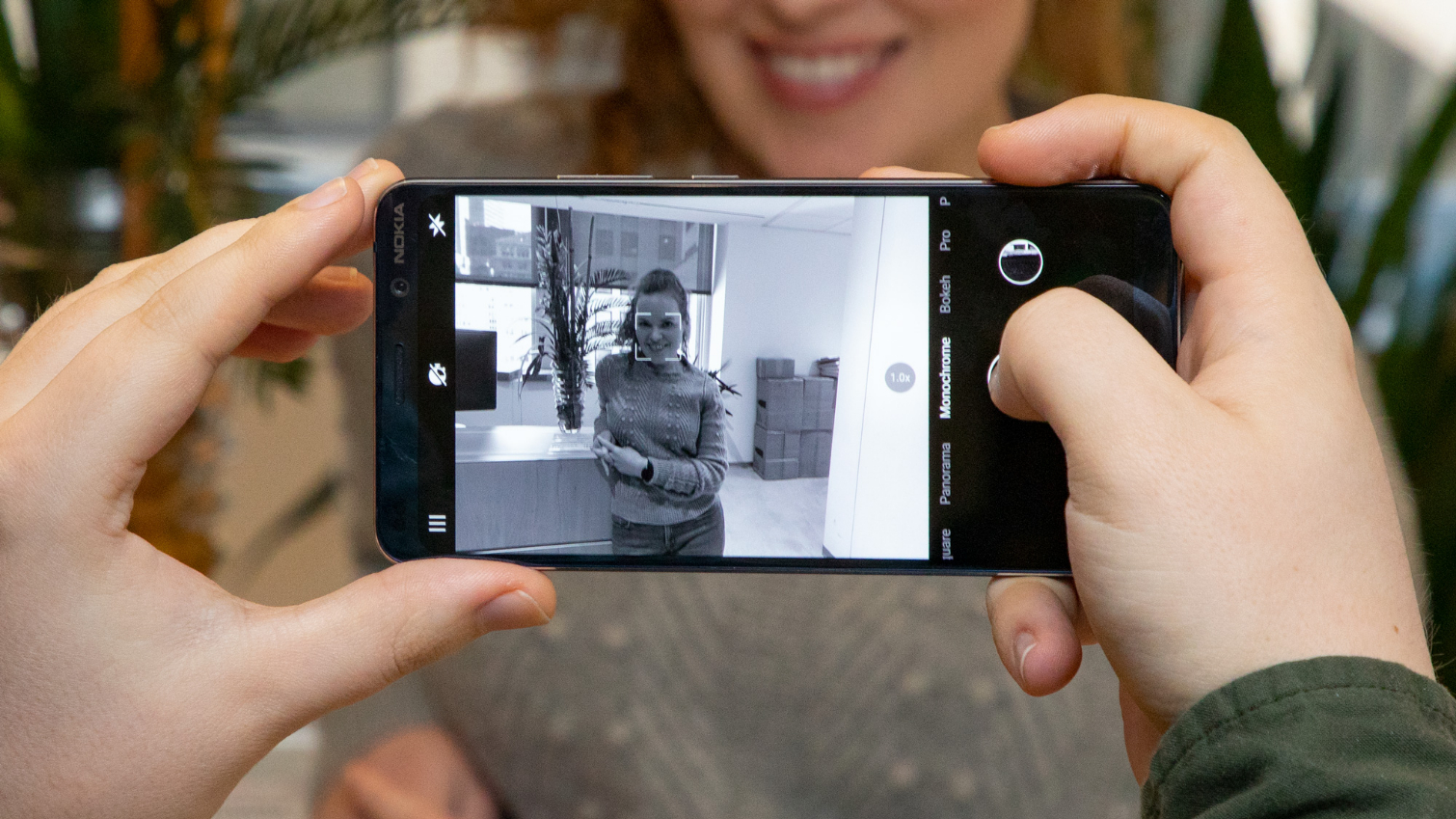
The Nokia 9 scored an 8,912 on the Geekbench 4 overall performance test, topping the Pixel 3 (7,216) and nearly matching the OnePlus 6T (8,972) and Galaxy Note 9 (8,876). As expected, the new Galaxy S10 (10,732) and Galaxy S10e (10,513), both of which are equipped with the Snapdragon 855, blew away the Android competition. However, Apple phones still dominate when it comes to performance; the iPhone XS, running Apple's A12 Bionic processor, scored an outstanding 11,420.
MORE: 10 Best Video Editing Apps for Smartphones and Tablets
In our video-editing test, the Nokia 9 PureView needed 3 minutes and 18 seconds to transcode a 4K clip to 1080p resolution in the Adobe Premiere app. That's a somewhat disappointing result, considering most flagship phones can complete that test in less than 3 minutes, like the Galaxy S10 Plus (2:26) and Pixel 3 (2:52). Amazingly, the iPhone XS took just 39 seconds.
Apps opened quickly and games ran smoothly on the Nokia 9. On 3DMark's Sling Shot Extreme OpenGL graphics test, the Nokia 9 scored a 4,653, topping the Pixel 3's score of 4,400 and the iPhone XS' 4,244. However, the Galaxy S10 Plus dominated with a score of 5,648.
While the Nokia 9's performance results feel behind the curve compared with other flagships, the phone didn't feel slow in my real-world testing, which involved streaming music on Google Play Music, browsing web pages with at least a dozen Google Chrome tabs open and playing mobile games, like the racer Asphalt 9.
Software: Sweet Android Pie
The Nokia 9 is an Android One phone, which means it runs an unmodified, bloatware-free version of Android. It's a refreshing approach, in contrast to the heavy-handed attempts by some phone makers to put their mark on Google's streamlined operating system.
MORE: Android 9 Pie Review: Google's OS Gets Smarter
Since it runs pure Android 9 Pie, the Nokia 9 adopts everything we love about the latest OS version, including improvements to adaptive brightness, UI tweaks and App Actions. Better yet, the interface is clean, and none of the included features feels redundant.
HMD promises quick software updates for the Nokia 9, and the company will support two years of version updates and three years of security updates.
Battery Life
The Nokia 9's 3,320-mAh battery is on the smaller side for a 5.99-inch phone, and it showed on our Tom's Guide battery test, which involves surfing the web over T-Mobile's LTE network with the screen set to 150 nits. The Nokia 9 lasted only 8 hours and 45 minutes, more than an hour less than the average smartphone.

That below-average runtime falls hours short of the competition, including the Galaxy S10 Plus (12:35), OnePlus 6T (10:23) and even the iPhone XS (9:41).
Nokia, in the company's former incarnation, was among the first to adopt Qi wireless charging in phones, so I'm happy to see that tradition continue with the Nokia 9 PureView. The Nokia 9 also supports fast charging via an included 18-W charger.
Bottom Line
If you're wondering if Nokia is back, the simple answer is: Yes. The Nokia 9's five-camera setup is a return to the days when Nokia was known for staking out new ground. While some kinks need to be worked out, the unique camera system is capable of producing outstanding images.
Even more impressive is the Nokia 9's gorgeous 5.99-inch, QHD+ display, which is among the most vivid we've tested. Additionally, Android purists will appreciate the phone's stock Android 9 Pie and HMD's track record for keeping their phones up to date.
Unfortunately, the Nokia 9's battery life, at less than 9 hours, is a major shortcoming, and its fingerprint sensor also disappoints. Photo processing is downright sluggish, and some of the images we took looked washed out. Not to mention, the Nokia 9 relies on last year's processor, and there is no SD card slot to store the supersize RAW images it supports.
Overall, the Nokia 9 is a great option for photo enthusiasts who want a versatile camera that can shoot in RAW, or anyone in search of a reasonably priced flagship phone that runs stock Android. While the OnePlus 6T remains the king of the "budget" premium category, the Nokia 9 has us eagerly anticipating HMD's next move.
Credit: Tom's Guide
Phillip Tracy is the assistant managing editor at Laptop Mag where he reviews laptops, phones and other gadgets while covering the latest industry news. Previously, he was a Senior Writer at Tom's Guide and has also been a tech reporter at the Daily Dot. There, he wrote reviews for a range of gadgets and covered everything from social media trends to cybersecurity. Prior to that, he wrote for RCR Wireless News covering 5G and IoT. When he's not tinkering with devices, you can find Phillip playing video games, reading, traveling or watching soccer.

